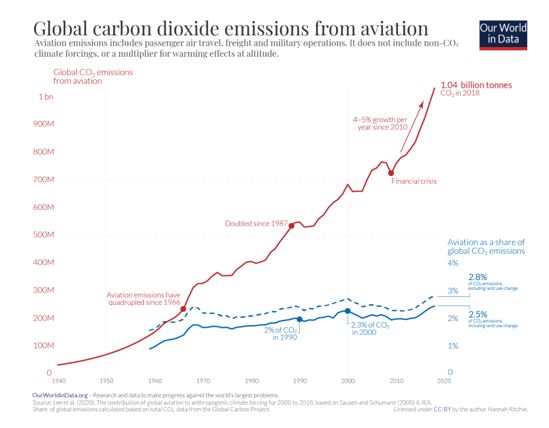Aviation Sector: Contributor to Green House Effect
Context
Aviation, despite constituting only a fraction of global carbon emissions, has a disproportionate impact on climate change. Understanding the dynamics of aviation emissions is crucial in devising strategies to mitigate its environmental impact.
1: Dimension - Historical Trends
- Surge in Aviation Demand: Between 1990 and 2019, global aviation demand, encompassing both passenger and freight travel, experienced a fourfold increase. This surge reflects evolving travel patterns and economic growth, driving higher air travel volumes.
- Enhanced Energy Efficiency: Over the same period, aviation witnessed significant improvements in energy efficiency, with flying becoming more than twice as energy-efficient. Advancements in technology, aircraft design, and improved load factors contributed to this enhancement.
- Influence of Technological Advancements: The aviation sector's evolution, marked by innovations in aircraft design and propulsion systems, has played a pivotal role in improving energy efficiency. Larger aircraft with higher passenger capacity and streamlined operations have contributed to reduced emissions per passenger-kilometer.
2: Dimension - Carbon Intensity
- Persistence of Carbon-Intensive Fuels: Despite advancements in aviation technology, the sector continues to rely predominantly on carbon-intensive jet fuels. The limited integration of cleaner alternatives like biofuels underscores challenges in reducing carbon intensity.
- Need for Sustainable Fuel Solutions: Addressing aviation's carbon intensity necessitates a concerted effort to explore and implement sustainable fuel solutions. Biofuels and synthetic fuels show promise but require scaling up to make a substantial impact on emissions reduction.
- Regulatory Frameworks for Emission Reduction: Effective regulation and policy frameworks are crucial in incentivizing the adoption of cleaner fuels and technologies. Government initiatives, coupled with industry collaboration, can accelerate the transition towards low-carbon aviation.
3: Dimension - Impact on CO2 Emissions
- Doubling of Emissions: Despite improvements in energy efficiency, the exponential growth in aviation demand has resulted in a doubling of CO2 emissions since 1990. This underscores the challenge of reconciling economic growth with environmental sustainability.
- Global Emission Trends: In 2019 alone, global aviation emitted approximately 1 billion tonnes of CO2, marking a significant contribution to overall emissions. The sector's emissions trajectory reflects broader trends in transportation and energy consumption.
- Urgency of Mitigation Strategies: Mitigating aviation emissions requires urgent action, encompassing technological innovation, policy intervention, and industry collaboration. Efforts to decarbonize aviation must align with global climate goals to limit temperature rise and mitigate environmental degradation.
UPSC Mains Practice Question
Q. Discuss the historical trends, carbon intensity, and impact on CO2 emissions of the aviation sector, highlighting the urgency of mitigation strategies to address its environmental impact.






